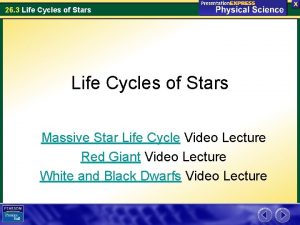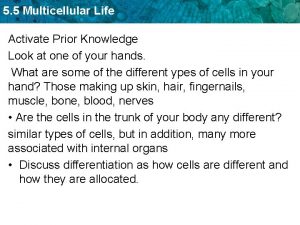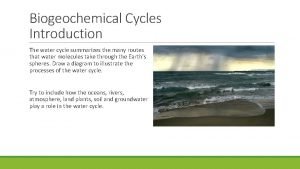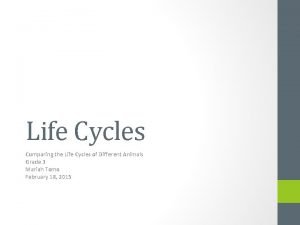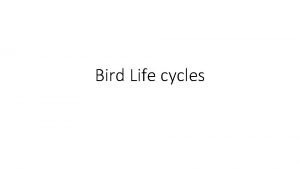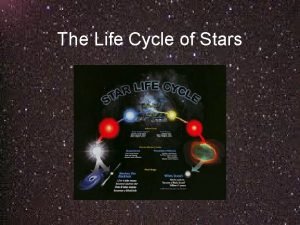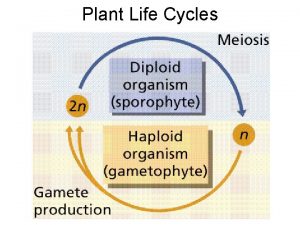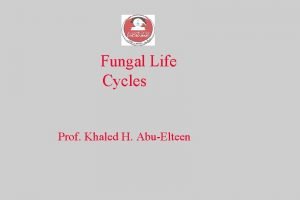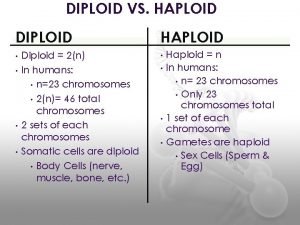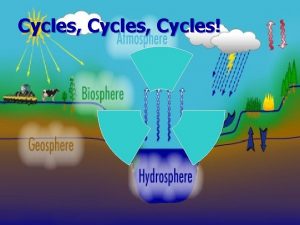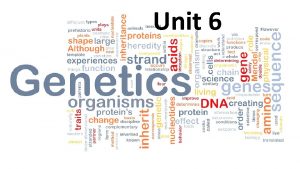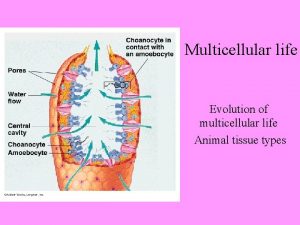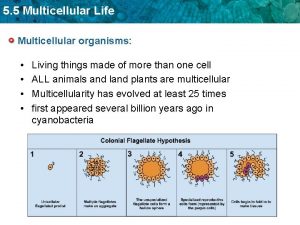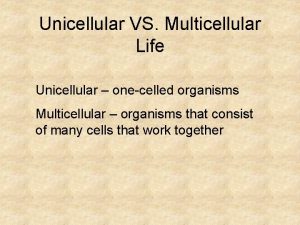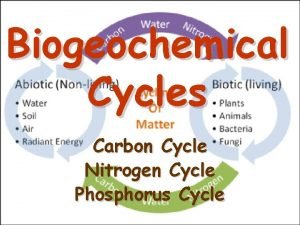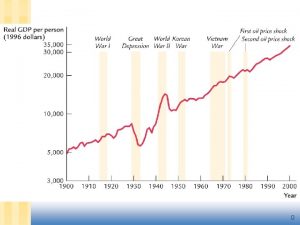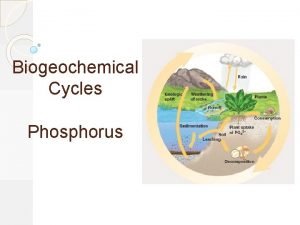Section 3 Multicellular Life Cycles Diploid Life Cycle











- Slides: 11

Section 3: Multicellular Life Cycles

Diploid Life Cycle • 1) Most animals have a diploid life cycle. • 2) Most of the life cycle is spent in the diploid state. • 3) All of the cells except the gametes are diploid. • 4) A diploid germ cell in a reproductive organ goes through meiosis and forms gametes.

Diploid Life Cycle, continued • 5) The gametes, (the sperm and the egg), join (fuse) during fertilization. The result is a diploid zygote. • 6) After fertilization has fused the sperm and the ovum, this single diploid cell goes through mitosis and eventually gives rise to all of the cells of the adult, which are also diploid. • 7) In diploid life cycles, meiosis in germ cells of a multicellular diploid organism results in the formation of haploid gametes. These are the ONLY haploid cells.

Diploid Life Cycle 9) All diploid cells undergo mitosis except for germ cells which undergo meiosis to produce the reproductive gametes. Germ cell Egg or sperm Undergoes mitosis 2 gametes fuse together

In haploid life cycles, meiosis in a diploid zygote results in the formation of the first cell of a multicellular haploid individual. The zygote is the ONLY diploid cell in a haploid life cycle. Meiosis in males (spermatogenesis) • 10) Male animals produce gametes called sperm. • 11) A diploid germ cell goes through meiosis I. Two cells are formed, each of which goes through meiosis II. The result is four haploid cells (gametes). The four cells change in form and develop a tail to form four sperm.


Meiosis in females (Oogenesis) • 12) Female animals produce gametes called eggs, or ova (singular, ovum). • 13) A diploid germ cell begins to divide by meiosis. Meiosis I results in the formation of two haploid cells that have unequal amounts of cytoplasm (one is much larger). In spermatogenesis, both cells are equal in size. • 14) One of the cells has nearly all of the cytoplasm. The other cell, called a polar body, is very small and has a small amount of cytoplasm.

Meiosis in females, continued • 15) The polar body may divide again, but its offspring cells will not survive. • The larger cell goes through meiosis II, and the division of the cell’s cytoplasm is again unequal. • The larger cell develops into an ovum. The smaller cell, the second polar body, dies. • 16) Because of its larger share of cytoplasm, the mature ovum has a rich storehouse of nutrients.


17) 18) 19) The nutrients of the large ovum produced nourish / feed the young organism that develops if the ovum is fertilized.

Summary • In diploid life cycles, meiosis in germ cells of a multicellular diploid organism results in the formation of haploid gametes. • Plants and most multicellular protists have a life cycle that alternates between a haploid phase and a diploid phase called alternation of generations.
 Section 26.3 life cycles of stars
Section 26.3 life cycles of stars Section 17-3 evolution of multicellular life answer key
Section 17-3 evolution of multicellular life answer key Section 17-3 evolution of multicellular life answer key
Section 17-3 evolution of multicellular life answer key Biogeochemical cycles performance task
Biogeochemical cycles performance task Alliteration of cycle
Alliteration of cycle Similarities between frog and butterfly
Similarities between frog and butterfly Bird life cycle
Bird life cycle Life cycles of stars
Life cycles of stars Style fashion and fad life cycles
Style fashion and fad life cycles Plant life cycles and alternation of generations
Plant life cycles and alternation of generations Sac fungi life cycle
Sac fungi life cycle Metaphase ii
Metaphase ii
